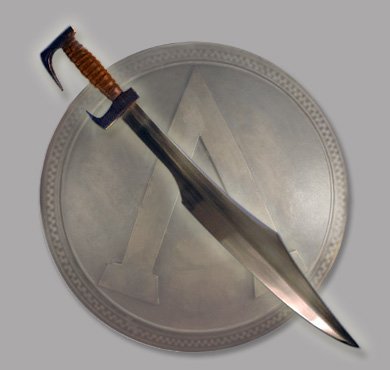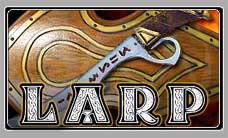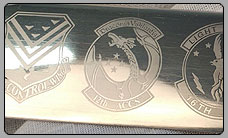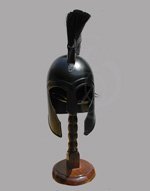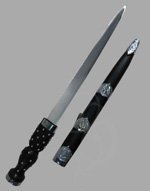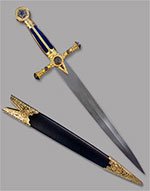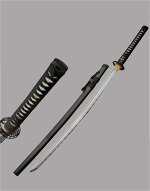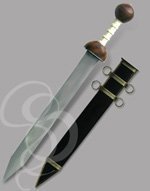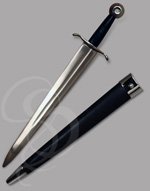Roman Gladius Vesparum
The Roman Gladius has a long and prosperous history. Originally a Spanish weapon, the Romans saw the effectiveness of the sword and quickly adopted it for their own troops.
The gladius was used primarily for stabbing, so it features a fearsome v-shaped tip, great for slipping through the spaces in ribs, or through the cartilage itself if aim was bad or mood particularly grim. The versatile blade could also be used to slash; both edges were sharpened and deadly. The weapon was ideal for the Romans, who used it in formation, with all soldiers drawing their gladius from their right side with their right hand (this bit of conformity kept legionnaires from accidentally dissecting their immediate neighbors). The small gladius were the perfect complement to the huge scutum shields (easy killer, I said Scutum) that the soldiers used in their formations, giving the troops speed and the ability to withdraw the weapon quickly and defend themselves solely with the shield.
Gladiators naturally adopted a (shorter) version of the gladius as one of their primary weapons and, in a burst of wild creativity, were named after their swords. Want some more nutsy creativity? Well, then consider this: Gladius in Latin means .... sword. Are we getting too abstract for you?
The Pompeii Gladius was one of the latest versions. One similar to this one was found in the ruins of the once mighty Roman colony. You'll recall that Pompeii had some volcano problems in 79 B.C. and ended up bundled nicely in the ancient version of packing peanuts. Bad for them, good for archaeologists.
See Strongblade's Roman Gladius Vesparum

